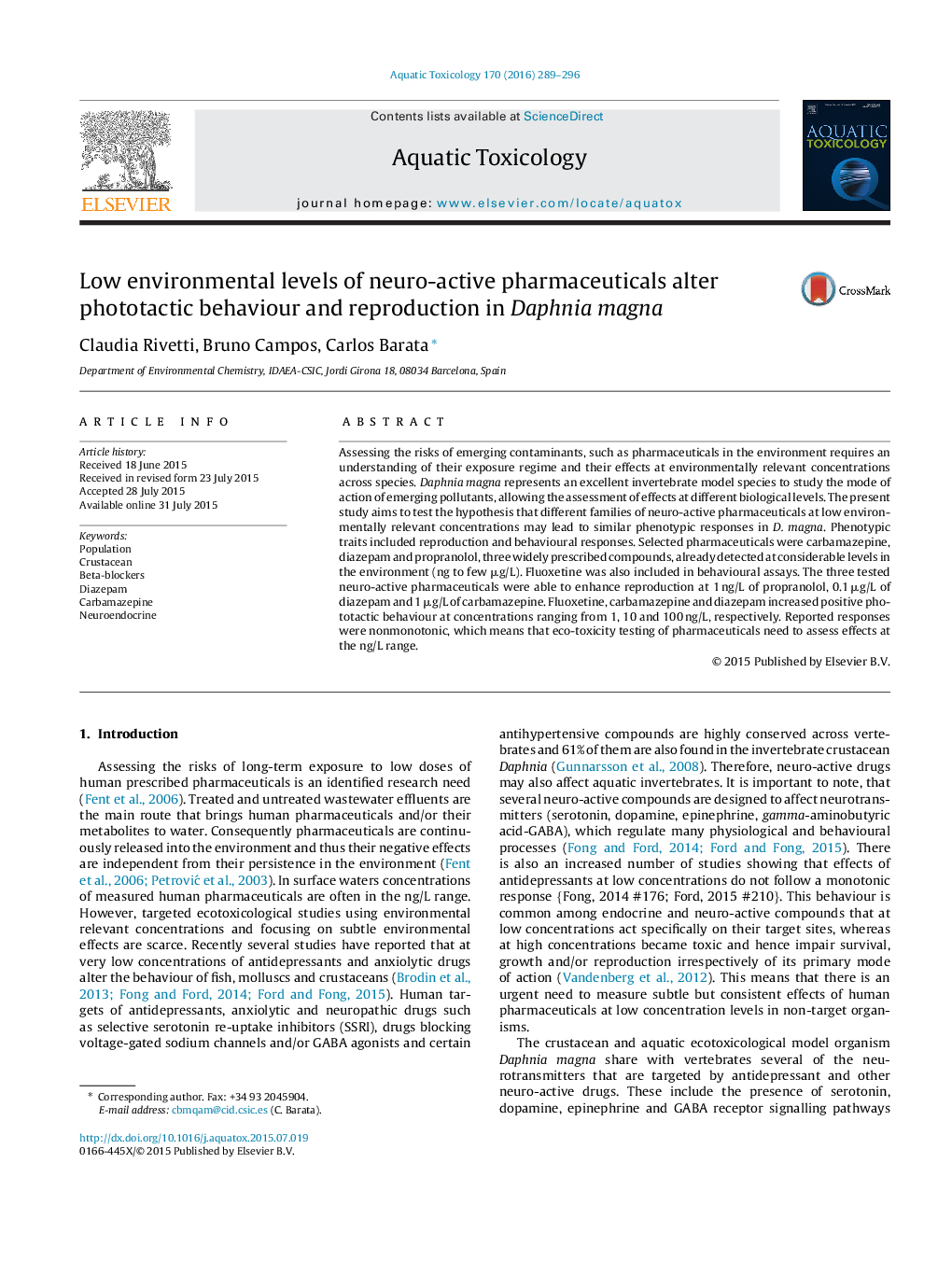| کد مقاله | کد نشریه | سال انتشار | مقاله انگلیسی | نسخه تمام متن |
|---|---|---|---|---|
| 4528989 | 1625935 | 2016 | 8 صفحه PDF | دانلود رایگان |

• Effects of low environmental level of neuro-active pharmaceuticals were studied in Daphnia magna.
• Reproductive and behavioural responses were non-monotonic.
• All tested compounds enhanced reproduction.
• Propranolol was the compound that enhanced reproduction at the lowest concentration.
• Fluoxetine, carbamazepine and diazepam decreased negative phototactic behaviour.
• Fluoxetine was the compound that altered behaviour at the lowest concentration.
Assessing the risks of emerging contaminants, such as pharmaceuticals in the environment requires an understanding of their exposure regime and their effects at environmentally relevant concentrations across species. Daphnia magna represents an excellent invertebrate model species to study the mode of action of emerging pollutants, allowing the assessment of effects at different biological levels. The present study aims to test the hypothesis that different families of neuro-active pharmaceuticals at low environmentally relevant concentrations may lead to similar phenotypic responses in D. magna. Phenotypic traits included reproduction and behavioural responses. Selected pharmaceuticals were carbamazepine, diazepam and propranolol, three widely prescribed compounds, already detected at considerable levels in the environment (ng to few μg/L). Fluoxetine was also included in behavioural assays. The three tested neuro-active pharmaceuticals were able to enhance reproduction at 1 ng/L of propranolol, 0.1 μg/L of diazepam and 1 μg/L of carbamazepine. Fluoxetine, carbamazepine and diazepam increased positive phototactic behaviour at concentrations ranging from 1, 10 and 100 ng/L, respectively. Reported responses were nonmonotonic, which means that eco-toxicity testing of pharmaceuticals need to assess effects at the ng/L range.
Journal: Aquatic Toxicology - Volume 170, January 2016, Pages 289–296